Christopher Hector continues his long (long!) survey of German dressage…
If you would like to read part one first – just click
This the second part of our in depth examination of what made German dressage great, we look at the beginnings of dressage breeding, talk to Werner Schade, the head of the Hanoverian Verband and also meet one of the visionaries who made it all happen, Hans Joachim Köhler.
We continue to examine the crucial rôle that horse breeding, particularly Hanoverian horse breeding, has played in Germany’s success. Christian Freiherr von Stenglin, whose father and grandfather before him were also stud officials, was the Landstallmeister of the State Stud Celle from 1958 to 1979. He made the point:
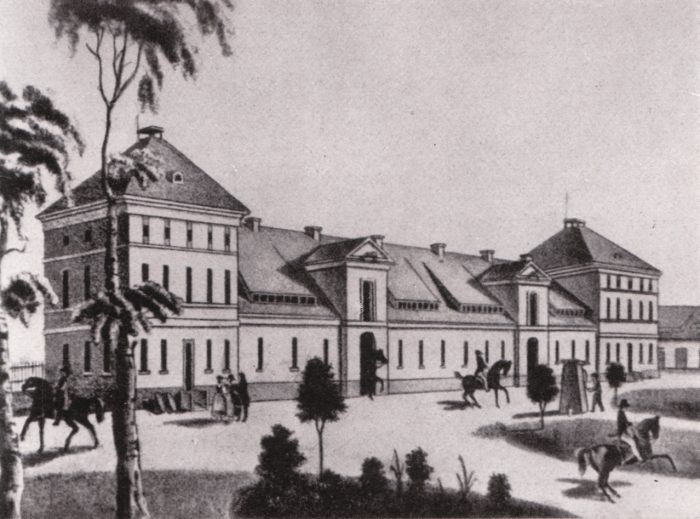
“It was in the last quarter of the nineteenth century that the horses from the different Hanoverian breeding zones developed their individual characteristics which reflected the agricultural structure, the amount of grazing available to the breeder, and the quality of the state stallions available in the zone. These characteristics remained up until about 1960, which marked the beginning of the modern era, that of the pure riding horse.”
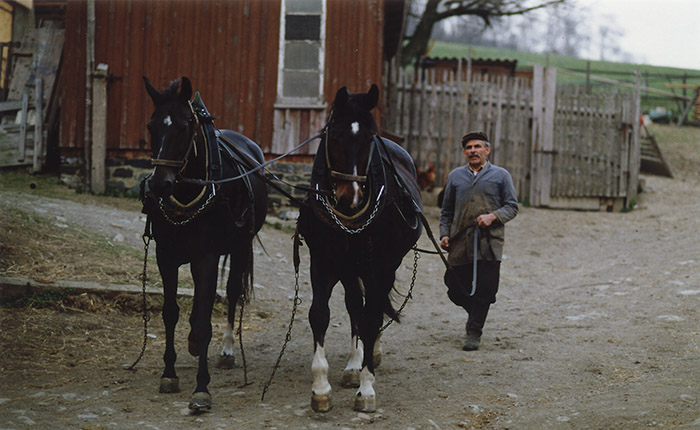
The very heavy Hanoverian had emerged in the period after World War I. Again, I quote from von Stenglin:
“In the period between the two world wars, the Hanoverians bred in the main breeding zones increased in bone and substance to the point where they were hardly recognisable as light (as opposed to agricultural) Warmbloods any longer. The reasons for this were not hard to discover. In a word, the market – the customers, that is – demanded a heavier horse. There was not much of a market for remounts, and in these difficult times there was little demand for sport horses. Substance and bone, gauged by the measurement around the cannon bone below the knee, became an essential factor in assessing the merit and value of a horse for the purpose of buying foals or breeding stock, for awarding prizes, or for licensing stallions. Even the army paid more for a coarse artillery horse with a lot of bone than for a potential cavalry horse.”
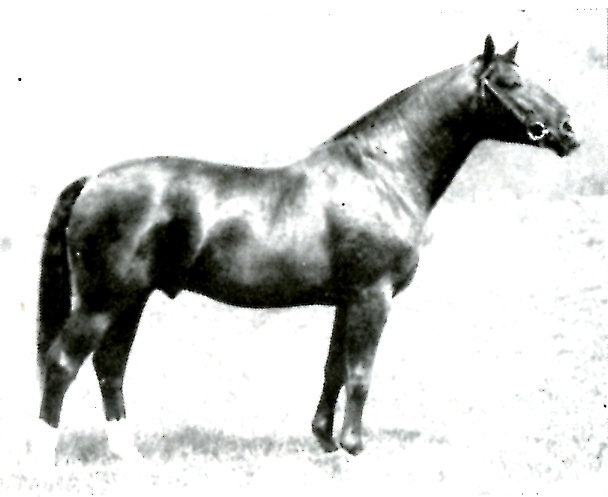
Futurist, born in 1933, one of the heavier types
But not all the horses being bred were elephants, thanks to that organizational genius Gustav Rau: “After the First World War, Gustav Rau was responsible for fostering an interest in riding among the rural community, including that of the Hanover region. As a result of this, many breeders’ sons became keen on riding. During this period many a broodmare was kept, who was not actually needed on the farm, but provided a mount for the farmer’s son at the local show on a Sunday or an afternoon off. In this way equestrian sport began to spread from a small circle of officers and well-to-do people, into the farming community.”
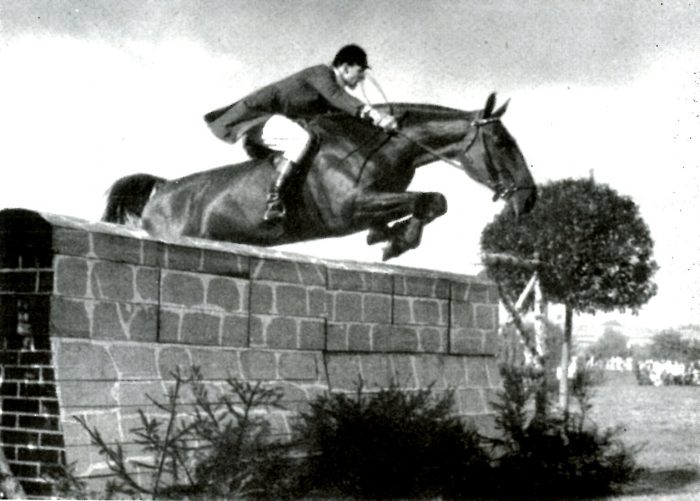
German champion of the jumping horses 1948 – Garant (born 1934) by Armtring I
– the Adeptus line again…
“In fact the Hanoverian Warmblood was not just a riding horse, but a good one. It distinguished itself in both national and international competitions during the period 1920 – 1940.”
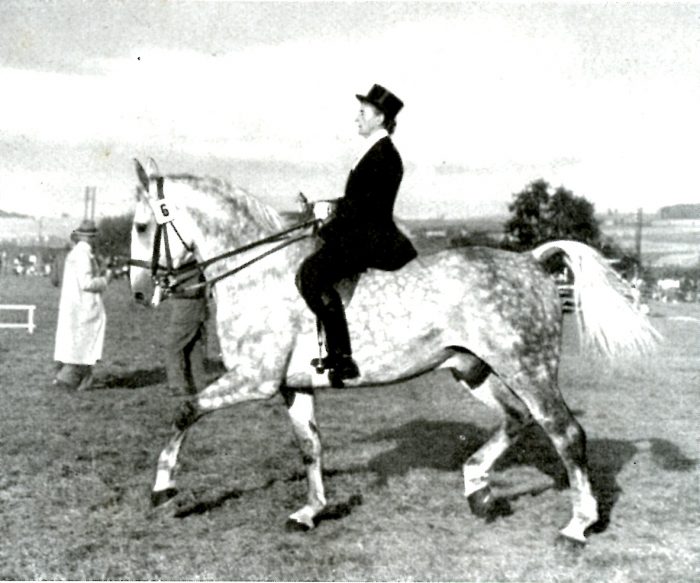
Here is one of those fine older style Hanoverians – the ten-year-old gelding Alarich II ridden by Frau Thilde Kalteye. In 1948 Frau Kalteye was Dressage Champion of the female riders, and Alarich II was multiple times Champion in carriage horse classes and eventing classes. On top of that the gelding was ‘severely tested in all agricultural work’.
After the Second World War the agricultural market disappeared and the horse population of West Germany fell to a tenth of its former level. In Hanover, the number of broodmares fell from 30,000 in 1948 to 6,500 in 1963, and the number of stallions from 539 to 149. Rescue in the form of the riding horse market came thanks to a number of Thoroughbred stallions: Adlerschild xx, Marcio xx, Der Löwe xx, Pik As xx and Waidmannsdank xx and Trakehner stallions – mainly Semper Idem and Abglanz.
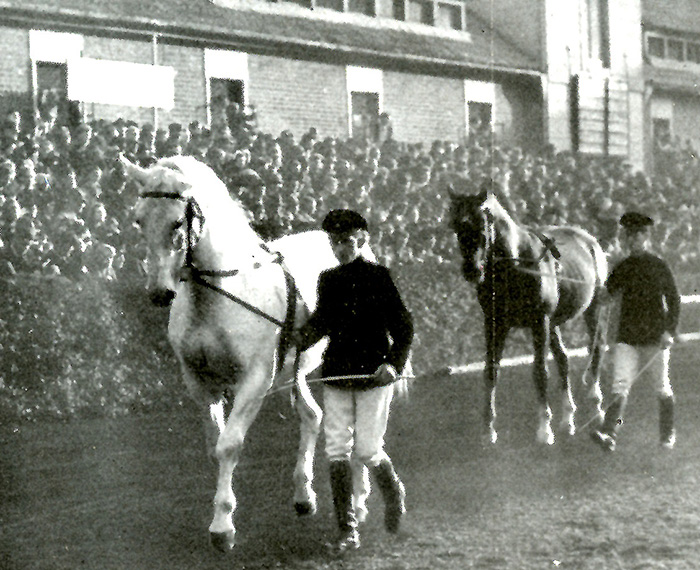
The stallion parade at Celle in 1948
Initially the market was for showjumpers, with the ones that couldn’t jump trying the dressage arena, but that too was shifting. While jumping remained popular, more and more German riders were looking for dressage horses, and despite the breeding authorities clinging to the ideal of the all-round horse, the market had started to demand dressage specialists.
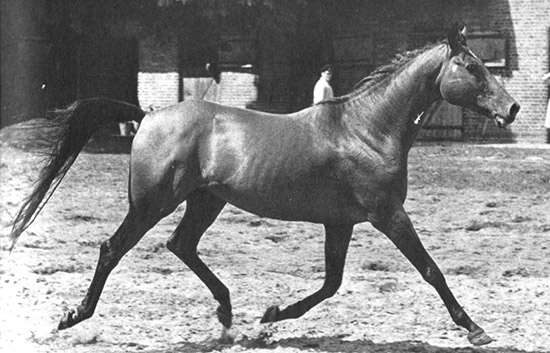
Marcio – Thoroughbred blood comes to the rescue
more follows below
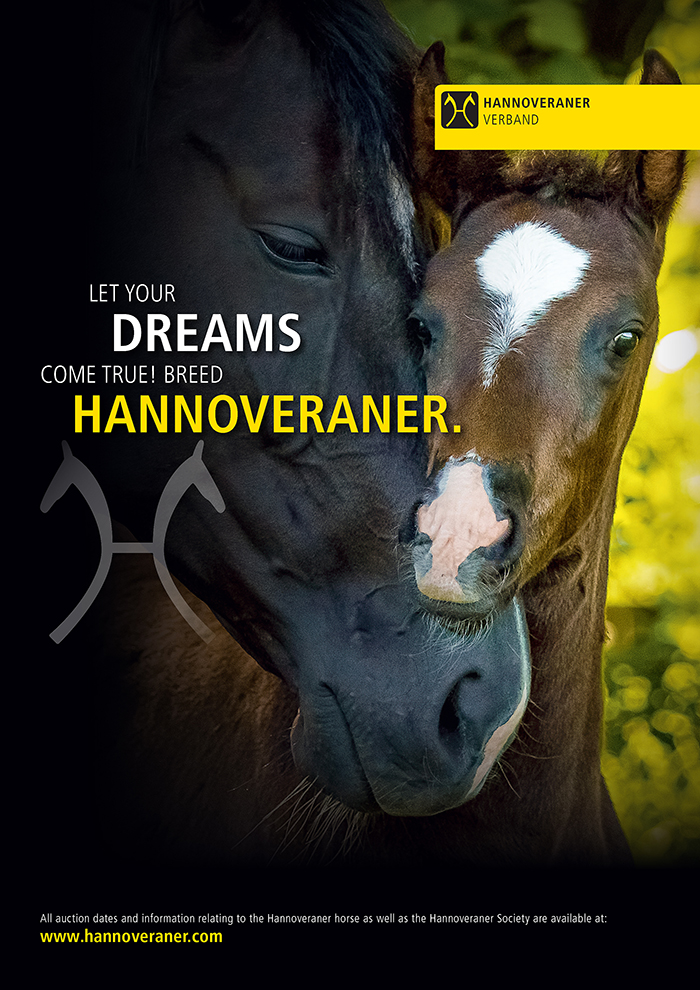
The director of the Hanoverian Verband from 2006 – 2019, Dr Werner Schade suggests that one of the reasons Germany produced dressage horses, while France, with a similar breeding structure, did not, is the importance placed on the paces in the German inspection system:
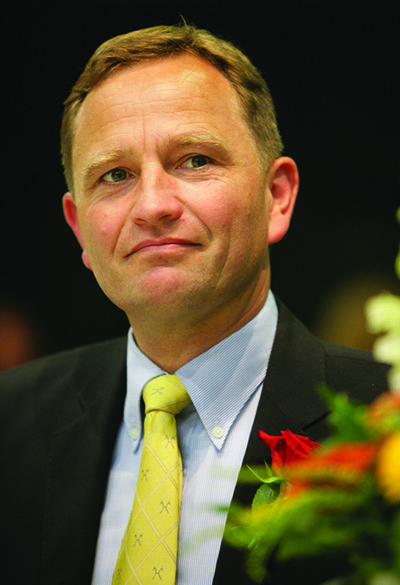
“Germany produced dressage horses, because of the scoring system, which is similar and comparable in the different breeding associations. In the scoring and selection system the criteria for functional conformation in the body parts, and the gaits, trot and walk, have great importance in judging young horses.”
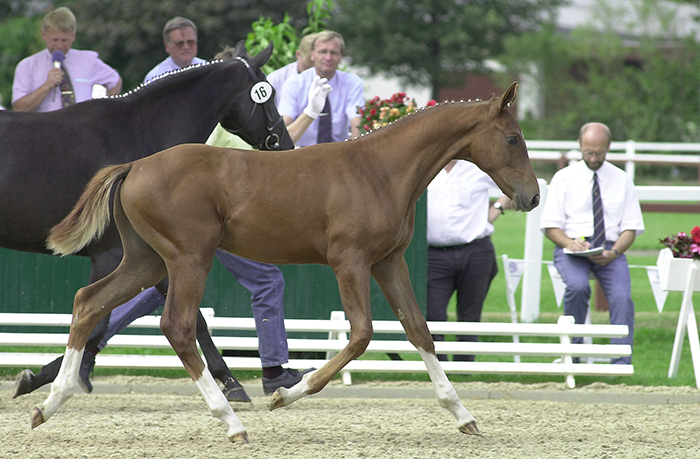
“This is the case in the mare show system, as well as in the stallion selection. The formation of the neck, the shoulder, the saddle position, the top line, the hind end construction, the uphill construction, the rectangular frame, are some of the most important conformation criteria. The trot is also very important, because it is a very difficult demand to show extended trot and a high grade of collection. Especially, the combination of the gaits with a good rhythmical ground-covering walk is also an important performance ability of a successful dressage horse. In Hanover dressage horses were selected in that way for many years.”
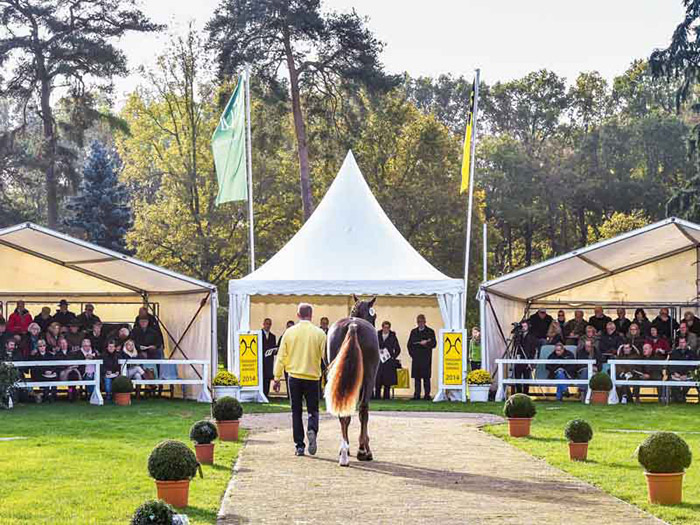
The stallion licensing in Hanover – selection aids dressage breeding
Was the development driven by the market, rather than a breeding strategy at the top?
“The demand of the riders and trainers influenced the development of dressage horses, because the market is the determining factor. But in my opinion it is an interaction of different factors. The breeding management must have the right ideas about the needs of the sport, and the development of competition. There are certain trends in limited time frames. Weltmeyer is a good example. There are nearly no stallion sons in the present breed, because the style of Weltmeyer’s movement is different from what we want to see today. On the mother side Weltmeyer is very valuable in the Hanoverian breed. The combination of D-line stallions is very successful. It is not right to say a bloodline is totally out, or totally in. It depends on having a horse that fits at the right time. That means the breeding organisation or the breeder must have an early plan, or an early idea, about future changes and development. Therefore you need a genetic base with a good stability in the mare population.”
I asked Werner why it seemed much easier to produce jumping stallions than dressage stallions… There must be at least 20 really good stallions currently standing in Germany and to make it onto the WBFSH jumping sires list, a stallion needs 20/30 international competitors, yet with dressage, aside from De Niro, the stallions have only a handful of competitors…
“This is a very interesting question. For me there are three reasons: firstly the qualities a jumping horse requires have a higher level of heritability in comparison to the dressage traits. The number and variety of qualities a dressage horse requires is higher than the number of qualities that a jumping horse requires.”
“And thirdly, the training way to the international top class is more difficult for dressage horses and with a stronger dependence on the competence of the riders. Therefore it is easier for a jumping stallion to come through in the breed.”
more follows
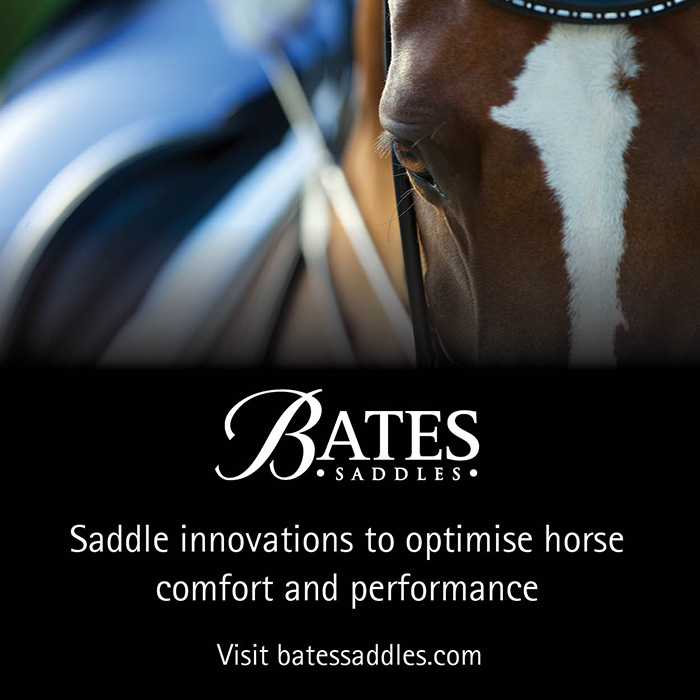
The Visionary: Hans Joachim Köhler (1917 to 1997)
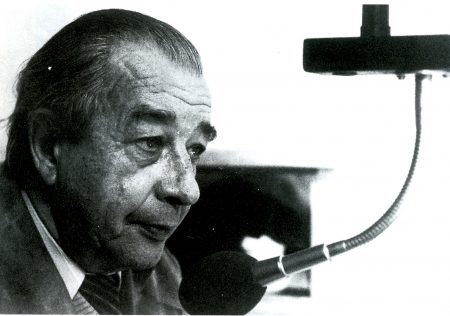
This make-over of the Hanoverian which rapidly became THE home of dressage horse was accelerated by the increased use of Thoroughbred and Trakehner blood. From 1945 to 1950, the proportion of Thoroughbred blood had fallen to 1.8% of the total population. By 1965, out of 160 stallions based at Celle, 6.9% were Thoroughbreds, a percentage that had risen to 11% by 1975, when 23 of 208 state stallions were Thoroughbred.
The Hanoverian was back and with an exceptional marketing and promotional campaign, ready to take on the world.
The hunt was on to breed a horse that would cater for the new sport horse market, and Hanover quickly led the way. This was a double-sided process. The Stallions in Celle became lighter, more ‘modern’ and at the same time the introduction of the first of the great modern performance horse auctions in Verden intensified the transition. The Verden Auction was the brainchild of the master horseman Hans Joachim Köhler, and if the breeders wanted to make money selling their horses at the Auction, they had to produce the sort of horse Köhler liked. And Köhler liked ‘blood’.
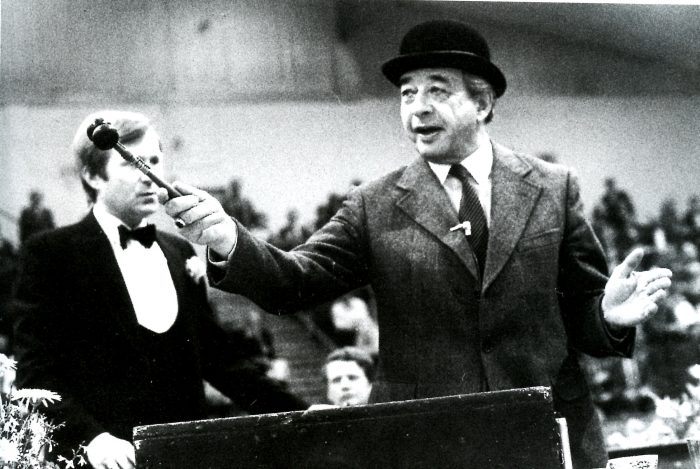
Köhler held his first auction in 1949. He retired 35 years and 70 elite auctions later, handing over responsibility to Reiner Kiel after the spring auction of 1984.
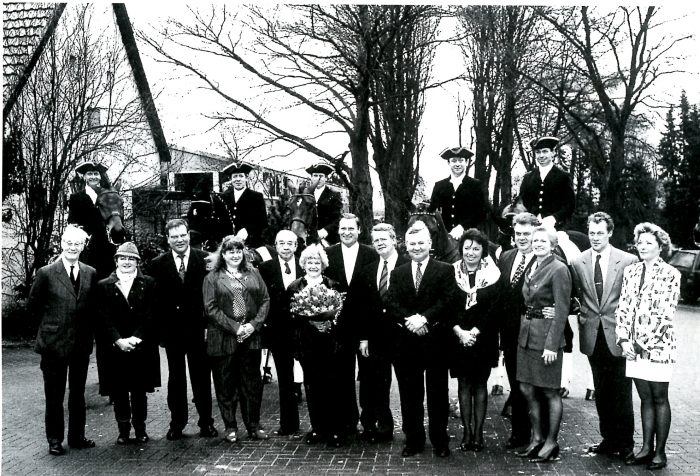
Köhler and his team…
Köhler was also instrumental in producing a group of exceptionally talented riders who came out of his auction team and went on to play key roles in the developing sport horse industry in Germany. Hans Günter Winkler was already a star when he became a member of the auction team in the early 50’s, but riders like Ulrich Kasselmann, and his wife, Bianca, who went on to establish Germany’s premier dressage horse sales centre, PSI, which was managed for many years by another former auction rider, Ulf Möller, one of the masters of the newly emerged young horse classes, learnt their craft under Herr Köhler with the assistance of Hungarian cavalry officer, Kalman de Jurenak. Riders like Holga Finken, another master of the Young Horse classes, Hans-Heinrich Meyer zu Strohen, current coach of Germany’s young dressage riders, and Holger Schmezer – who went on to coach of the German dressage team, all worked in the auction team. Others included Inge Theodorescu, mother of Monica, the current German dressage coach, Helga Köhler and Tjark Nagel. The long time public relations manager of the auction, Enno Hempel, also learnt the job ‘hands on’ starting as an auction rider in 1966.
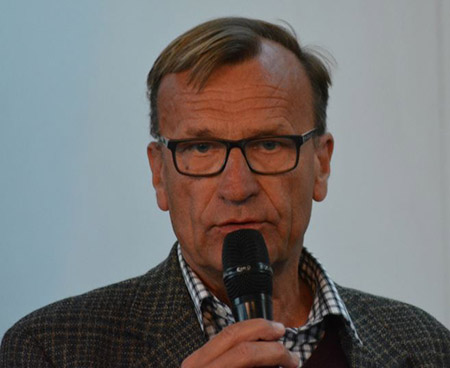
Enno Hempel was one of the legion of young men and women whose lives were turned around as a result of meeting Hans Joachim Köhler. Suddenly a part time university holiday job became a lifetime vocation. In Enno’s case he was to graduate from rider via customer services and assistant manager in marketing to journalist and publicist. He celebrated HJK’s life in an obituary in Der Hannoveraner, and later that year in Bernd Eylers’ annual stallion directory. The following words are an amalgam of the two:
He was a true hippologist, someone who always looked outside the box. To honor him is to honor HJK as a foster father. Many horse people – and I was one of them – have grown into the horse business, profited, learned, and grown under his guidance – perhaps the best known of these is Ullrich Kasselmann, the head of the largest private dressage selling operation in Germany. Many of them have enjoyed HJK as a godfather, and they were so willing to add their enthusiasm to his direction.
Although there had been auctions elsewhere before 1949, the paternity of the Verden auctions is clearly his. HJK was responsible for the vast system that has grown through the decades. More than 35 years of the development of the Hanoverian breed, and the development of the international viewpoint, that are the lifeblood of the Hanoverian, are his legacy. The entire horse culture of the present time has been informed by the life of HJK: by example, by genius, by consequence, by mistake; through productive and constructive criticism.
The background
His father Hans Köhler was the Landstallmeister of the Mecklenburgisches Landgestüt Redefin. HJK, born during the First World War, experienced his youth in the stud farm of Redefin and thus he was already learning in the cradle, that which would make the horseman. He also had mentors beyond the family home. Landoberstallmeister Gustav Rau in the field of Hippology and Hans-Joachim von Killisch-Horn in the field of journalism and marketing.
The High School in Berlin was less influential in his development than his time as a soldier. He was based at Parchim and the cavalry school Krampnitz, becoming a Major in the lead up to the Second World War. In the war, he lost his left leg but got back on horseback as fast as possible. As the commander with responsibility for 1,000 riders and horses, this was an important learning experience for HJK.
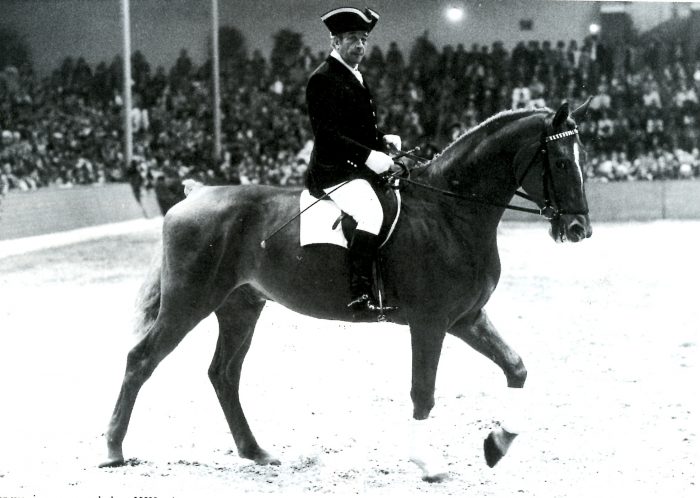
Fleeing from the Soviet occupiers at the end of the war, he gravitated to what was to become his life long commitment to the Hanoverian horse. First as an editor of the breeders’ magazine, thus the connection to the Verden scene, where the Hanoverian stallion licensing and where the Verden riding horse auctions found their home. At the time of the majority of horses were still agricultural, HJK already had his ideas of the modern riding horse and was one of the driving forces in the bringing the new model into being. Here, the Verden auction team under the leadership of HJK was a constant.
The new Niedersachsenhalle was another highlight in the 70s, here was a space with scope for ambitious goals. In all, the love for the detail remained, the appreciation of the individuality in each horse and each human counterpart, had the highest priority. The atmosphere created and the brilliance of the presentation sometimes had something daring, often something artistic, almost always something solid, hardly anything artificial. The expansion of auction types throughout the year, as well as the elite auctions, continued to set new standards. During this time he developed with enthusiasm, knowledge and scientific interest, the German Horse Museum in Verden, which still has a unique position in the world.
The personality of HJK was always shaped by creativity. His journalism had its own unmistakable style in the presentation of facts and anecdotes. The willingness to use poetic freedom made the writing entertaining and rich in content. All this informed by the pronounced sense of humor with a great sense for situation comedy.
At times his high degree of concentration gave the impression of unapproachability. Even if at times hardness was required, it was always mixed: determination and benevolence were always there, human warmth and honest responsiveness, commonplace. All in all, the quality of HJK’s leadership style has been unequaled so far. It was no surprise when HJK was awarded the German Order of merit (Bundesverdienstkreuz) in the 1980s.
Although the practitioner Köhler was often more an artist than a businessman, everything he turned to was touched by his fascinating charisma. It extended to his family and their home at Köhlerhof Estate. Very much a part of the team was his wife, Helga Köhler, who belonged to the auction rider team from the very beginning. She focused on showjumping and was one of the most successful lady riders over decades, a key rider in the Nation Cup team as German ambassadors in North America in the 1950s.
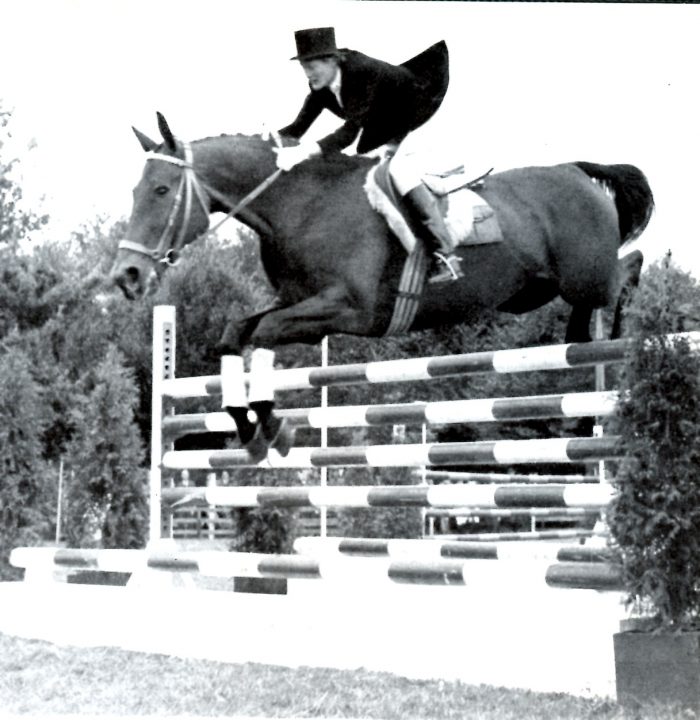
Helga Köhler – wife and showjumper
A late joy for HJK was to see the homegrown licensed and Hanoverian recognized stallion, Pygmalion recognized as the maternal grandsire of Stakkato, the horse that gave the Hanoverian show jumpers internationally a famous name again.
In his book “Biographical Notes of a Horse Rider”, HJK wrote: “Life goes on. The Lord directs and tells us to believe. He reminds us, be noble to strive in value-creating activity, to live in decent disposition, to let live. For many of us he gave the gift of love on horseback.”
Even today, the cigar scent still perfumes the file folders in the archives of the Auction, just as his influence and direction lives on in the memories of those touched by a remarkable life.
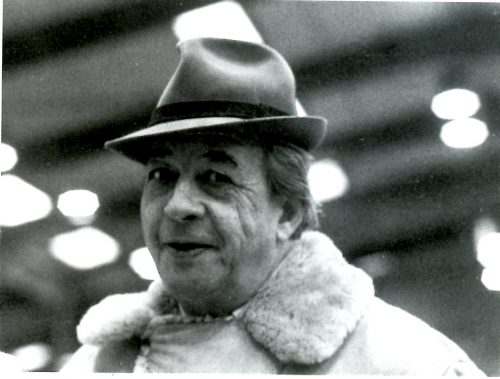
Many thanks, Enno…
Not only were the Hanoverians producing a new type of Sporthorse, the Verden Auction was also part of the process of creating a class of trainers and riders who could expand the market for the new horse…
Some measure of the success of the auctions can be seen in the steady onwards and upwards average prices. The first elite auction took place in a barrack-area at the eastern border of Verden in November 1949. There were 18 horses sold at the average of 1.900 DM.
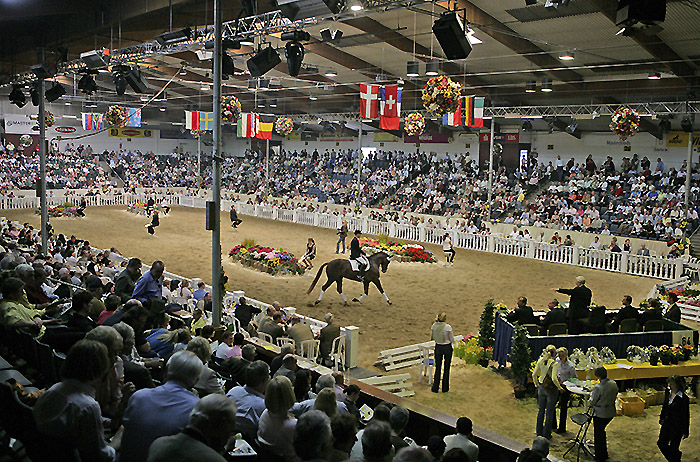
The average prices and numbers of sold horses in the fall auctions:
1959: 54 horses for 4,634 DM;1969: 86 horses for 12,570 DM;1979: 178 horses for 16,702 DM;1989: 114 horses for 25.877 DM;1999: 67 horses for 55,343 DM;2002, the first year of the Euro: 74 horses for €29,385;2007: 92 horses for €45,967; 2008: 103 horses for €40,266
In 2008, the six auctions, saw 584 horses sold at an average price of €21,390 but it should be noted that the averages varied from €40,266 at the Elite auction to €12,71 at the November auction. Interestingly the top price was for the showjumper, Levistan (Levisto / Argentan) for €310,000. The top price for a dressage horse of €195,000 was paid for Bacchus von Worrenberg (Belissimo M / Calypso II).
Despite the ups and downs of the last few years, the auction prices have remained consistent. 2009: 84 horses for €37,181; 2010: 86 horses for €35,500; 2011: 85 horses for €43,282; 2012: 62 horses for €31,863; 2013: 64 horses for €43,809; 2014: 61 horses for €38,525; 2015: 81 horses for €36,481; 2016: 82 horses for €29,500; 2017: 76 horses for €34,947.
Take the time to explore our library – the largest collection of equestrian articles in the world…

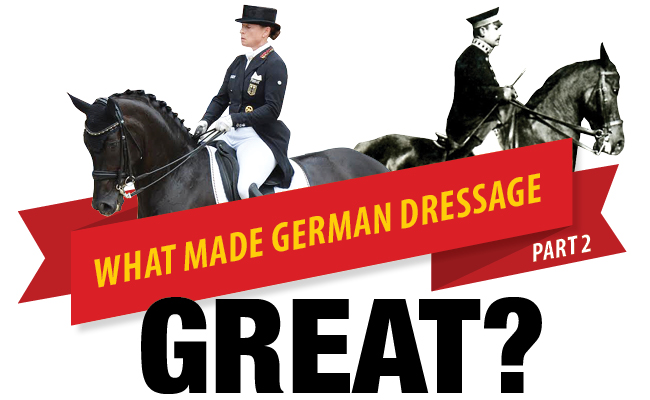
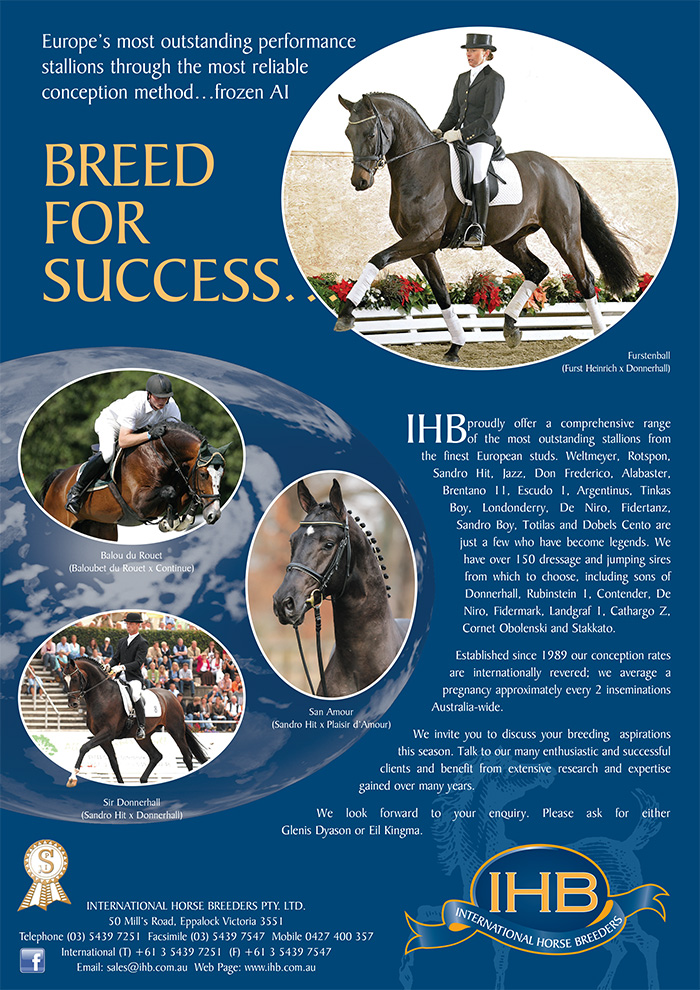
I don’t know, I’m interested to read the first half of this but I’m most interested to read the third part? I just know arriving in Europe in the very early eighties as a young man being very disappointed in the quality of dressage horses across the board, the Netherlands Germany Sweden, across the board. When I say disappointed I mean I was worried…..I had grown up on TBs the great XX’s I looked so eagerly for in every pedigree.
The manner of riding and going was so very very different when i got to Europe. With few exceptions I only saw heavy boned horses with no elevation what I came to call the complete lack of “lightness of being” after the movie. I didn’t dislike the horses just I found they inthe main they were unresponsive.
I was in it’s tue in deep melancholy after being separated from my beloved mare Iolanthe for a life in Europe in political exile. For me she was the blue print for a modern dressage horse, a TB standing 17.2. She danced her way into my soul and would quite literarily dance in her field just to greet me. We had a very special relationship. Remarkably she had a hole in the heart too but that didn’t stop her dancing. Exquisite, absolutely she had the proportions of a horse like “Sandro Hit” https://helgstranddressage.com/en/stallions/sandro-hit-2/2643 a horse I have learnt to trust as my ideal. A warmblood in the skin of a the TB I adored. The horse I always waited for to be born.
Even today i keep looking for that head. I find the warmblood not very good looking to be hinest, quite random in fact, some have it but the ears are too long, some have it but the ears are too short, there just isn’t the uniform beauty separated by unique individualism that is found in the TB. For sure the TB has been around a lot longer than the “modern sport horse” but still you find heads harking back to the original F1 mixes, you find long backs short backs, wide heads and narrow ones too, you find everything but the consistency of the TB head. What you dont find much anymore are flat croups, short necks and legs but still auctions can be a revelation of the past.
No one it would be fair to say was breeding dressage horses when I arrived except the Spanish and the Portuguese. These however were not long lined like the TB they didn’t have the elasticity and reach, but nor did the warmbloods quite honestly.
It was an interesting time for sure but a mixed up time for me. I knew what I preferred but people were still arguing about the ideal shape of a horse never mind for dressage or jumping. Was it a square model or a rectangle model!? The angle of the croup had to change and so it did. For both jumpers and dressage a horse needed to have that. Or did they exactly for jumpers…..a lot of confusion to say the least.
Slowly but surely Iolanthe was being recreated by breeders in Germany and Holland as a dressage horse. Bit by bit she was pieced together and still not entirely but getting close. Sadly not without some critical losses along the way. Three of those to me would be the original Oldenburger the Dutch Gelderlander and the Groninger, all of which I had come to deeply respect. Sadly it didn’t take long for these to vanish entirely. The modern recreations bear no semblance of the originals at all. I had come to appreciate in all the confusion the buiding blocks, so very much villified in the march to modernism. So in awe was I that I bought a son of a classic Oldenburger mare, the closer you got to her the greater she filled the eye, standing 18hh she was a Phoenix of a horse. I very much wanted her herself recognising the quality of these original breeds but the farmer was unwilling to sell, rightly so.
I think simply because they were also so different to the TB but specialist in the same way, a thing the warmblood wasn’t yet. it was just a mix up. An F1 at best and out of it;s depth at best. However the originals were unique and worthy of a continued place. I saw horses like these winning in the “vierspan” competitions with ease. Magnificent horses in their own right. Loads of front and size. I wanted nothing but to ride these horses, Dutch horses then in the main but then also Oldenburgers.
A particular Gelderlander colt, four white socks, tall and lovely same age as my Oldenburger, in fact sharing the same field as yearlings. They became my shinning stars in the absence of any others. Unfortunately they were both probably also the very last of the originals. The modern versions are simply not comparable. I saw the same Gelderlander at a dressage competition for youngsters, he had been gelded. I filmed him for prosperity. People were aghast wondering what i was doing filming this old fashioned horse. The very same that would passage in circles around me in the field just for fun. Who would gallop head in the air with my Oldenburger as far as they could run then turn and passage their way back to me snorting and sweaty. These became my best friends in those distant days of exile. They were worthy of Iolanthe in everything and anything, true to themselves and simply wonderfull.
The warmblood both in Germany and the Netherlands were in flux. For certain no one was breeding for dressage and no one was breeding for jumping, they were all going for “modern horse”. Dressage had to find the gems amongst the jumpers, though that’s for sure. They weren’t exactly gems either.
I felt like the keeper of the universe for a few glorious summers. So I was. The Gelderlander which was sold off to Israel became an international Grand prix horse, the Oldenburger which went to Sweden and did the same and the TB who died of her hole in her huge heart and most definitely flew straight to heaven where god willing we should meet again.
The same time I died, dressage speaking, left so utterly all alone. But great times and times and times change. I could never quite bring myself to get involved again with this most absurdly magnificent animal. Chances anyway meant I never would. I remember almost purchasing a horse at auction , a year or three ago, a Holsteiner a wondrous grey colt just under saddle, jumper bred. I met the owner/breeder online by chance and we excitedly watched as he sold for a record price that year and as a dressage prospect too! Far out bidding even the jumper prospects as I knew he would. At the last minute realising I would never actually ever sit on a horse ever again, I gave over. It wasn’t my age. It wasn’t my confidence. It was the long time coming realisation that it wasn’t fair on the horse. They never came into existence for us to sit on them, but rather to be themselves. However I shall always ride Iolanthe into my dreams, a horse that lived to go hand in hand with me across tall waving grass, that danced for the sheer joy of dancing. I am forever thankful.
I feel I have lived through the entire development of the modern warmblood, and in doing so believe we may be edging too far now but that is a different discussion and room for part three of this story. We have all but lost those foundation breeds, yes and sadly because at times I believe we still urgently need them around. But rather more worryingly for me I believe we are loosing the thoroughbred we have come to depend on for our warmbloods. No one seems much worried. Yet this is critical. In all but name the warmblood now holds the key. If this all seems like irony it is!! Absolutely it is. it’s easier for me to find the TB of old amongst the warmblood than it is amongst the TBs today!
We need a rethink here. An urgent pause. Everything is diverging at a time when we need some convergance and rather urgently.
I feel we may have come full circle in part and that is strange enough for me.